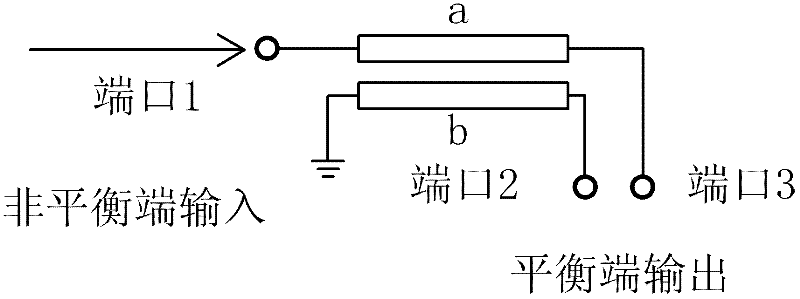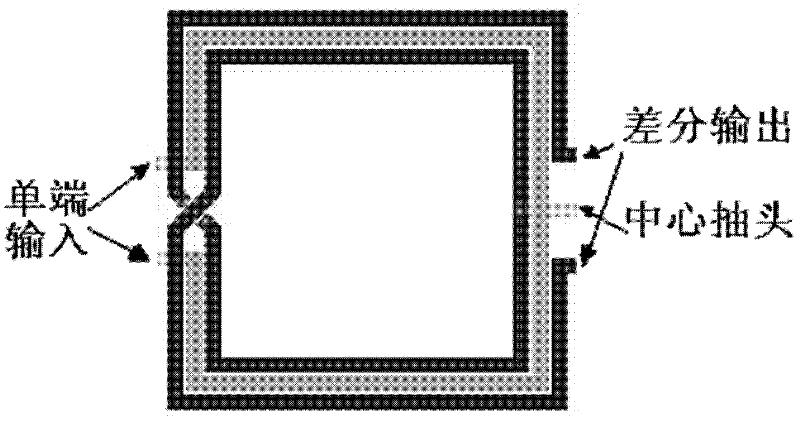A Broadband Low Loss On-Chip Passive Balun with Stacked Serpentine Structure
A low-loss, meandering technology, applied to electrical components, connecting devices, circuits, etc., can solve problems such as deterioration of amplitude balance and phase balance, difficulty in ensuring complete symmetry of geometric structures, and large substrate eddy current effects, etc. Small eddy current effect, reduced substrate eddy current effect, and reduced electromagnetic coupling effect
- Summary
- Abstract
- Description
- Claims
- Application Information
AI Technical Summary
Problems solved by technology
Method used
Image
Examples
Embodiment Construction
[0027] see Figure 4 , 5 , 6, 7, a passive balun on a laminated meandering structure broadband low-loss chip is provided with three layers of metal wires, an insulating dielectric layer is arranged between each layer of wires, and the first layer of metal wires is a secondary wire, such as Figure 5 shown. The second layer of metal wire is the primary wire, such as Figure 6 shown. The third layer of metal wire is the ground wire, such as Figure 7 shown. The first and last ends of each layer of metal wires are in a U-shaped continuous bending structure (chamfers can be set at the bends), and the geometric structure is completely symmetrical (for the convenience of port leads, the U shape in the middle can be slightly higher) unbalanced The single-ended signal is input to the first end 1 of the primary wire, and the tail end 6 of the primary wire is connected to the ground wire, through the coupling effect of the primary wire and the secondary wire (in order to strengthen...
PUM
 Login to View More
Login to View More Abstract
Description
Claims
Application Information
 Login to View More
Login to View More - R&D
- Intellectual Property
- Life Sciences
- Materials
- Tech Scout
- Unparalleled Data Quality
- Higher Quality Content
- 60% Fewer Hallucinations
Browse by: Latest US Patents, China's latest patents, Technical Efficacy Thesaurus, Application Domain, Technology Topic, Popular Technical Reports.
© 2025 PatSnap. All rights reserved.Legal|Privacy policy|Modern Slavery Act Transparency Statement|Sitemap|About US| Contact US: help@patsnap.com



